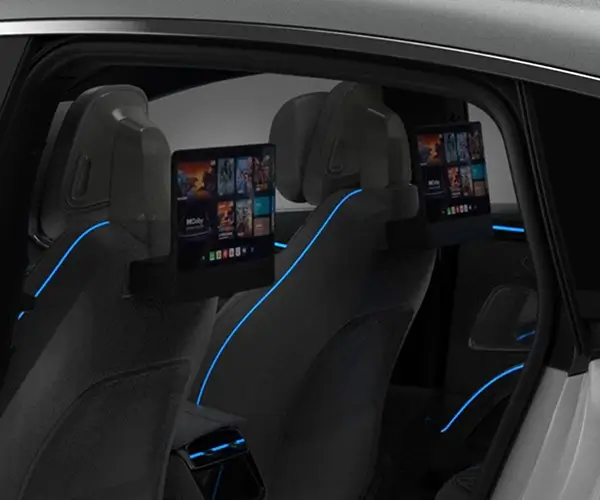Unlocking Creativity with Servo Motors for Arduino Uno: A Beginner's Guide
In the rapidly evolving world of electronics and robotics, the Arduino Uno has become a cornerstone for hobbyists, students, and professionals alike. Its versatility, affordability, and user-friendly programming environment make it the perfect platform to bring ideas to life. Central to many programmable projects is a component that bridges the gap between digital signals and real-world movement: the servo motor.

What Is a Servo Motor?
A servo motor is a compact, precise motor system designed to rotate a shaft to a specific position, angle, or speed, controlled through electronic signals. Unlike typical DC motors that spin continuously, servos respond to control signals—usually Pulse Width Modulation (PWM)—to achieve accurate positioning. This feature makes them ideal for applications requiring angular position control, such as robotic arms, camera gimbals, or automated door systems.
Why Use a Servo Motor with Arduino Uno?
The Arduino Uno, with its simple pin configuration and robust programming environment, offers an easy gateway to controlling servo motors. Using a servo with Arduino allows you to:
Create intricate robotic movements Automate mechanical systems Design interactive art installations Develop precision-controlled automation devices
Additionally, servo motors are readily available, affordable, and come in various sizes and torque ratings.
Understanding Servo Motor Types
While many people think of standard hobby servos, there are different types:
Standard Servos: for typical hobby robotics Continuous Rotation Servos: which rotate freely with variable speed control Digital Servos: that offer faster and more precise control High-torque Servos: for demanding applications
For beginners, standard hobby servos are the best starting point due to their simplicity and ease of integration.
Getting Started: Components Needed
To start your servo motor project with Arduino Uno, gather these components:
Arduino Uno board Servo motor (commonly SG90, MG90S, or similar) Power supply (usually 5V, sometimes dedicated to the servo depending on load) Jumper wires Breadboard (optional) Resistors or potentiometers (for advanced control)
Once you have these, you're ready to connect your first servo motor.
Connecting the Servo to Arduino Uno
The typical servo has three wires:
Power (Red): Connect to Arduino 5V pin Ground (Black or Brown): Connect to Arduino GND Signal (Yellow, White, or Orange): Connect to a PWM-capable pin (like digital pin 9)
Ensure your power supply can handle the servo's current draw—if you're using multiple servos or a high-torque model, consider providing an external power source to prevent brownouts on the Arduino board.
Basic Arduino Code for Servo Control
The simplest way to control a servo is using the Servo library provided with the Arduino IDE. Here's an example sketch:
#include Servo myServo; void setup() { myServo.attach(9); // attaches the servo on pin 9 } void loop() { myServo.write(0); // turn to 0 degrees delay(1000); myServo.write(90); // turn to 90 degrees delay(1000); myServo.write(180); // turn to 180 degrees delay(1000); }
Upload this code to the Arduino, and observe the servo moving to different angles in sequence.
Fine-Tuning Your Control
In more advanced projects, you may want to control the servo with sensors, remote inputs, or even via wireless modules. Using potentiometers as input devices can allow manual control of the servo’s position, creating interactive art or control panels.
Using Potentiometers for Manual Control
Connecting a potentiometer (variable resistor) to the Arduino's analog input allows you to read the voltage and map it to a servo angle:
#include Servo myServo; int potPin = A0; // potentiometer connected to analog pin A0 void setup() { myServo.attach(9); } void loop() { int val = analogRead(potPin); // read potentiometer int angle = map(val, 0, 1023, 0, 180); // map to servo angle myServo.write(angle); delay(15); // wait for servo to reach position }
This simple setup makes your servo respond to manual adjustments, perfect for crafting custom controllers or interactive displays.
Power Considerations
When your project involves multiple servos or high-torque models, power management becomes critical. Board power from USB may not suffice, leading to jittery movements or resets. It's advisable to:
Use an external 5V power supply with enough current capacity Connect the grounds of the Arduino and power supply together Avoid powering the servo directly from the Arduino 5V pin in high-load scenarios
Now, on to the next phase—more advanced control techniques, integrating sensors, and building complex projects.
Kpower has delivered professional drive system solutions to over 500 enterprise clients globally with products covering various fields such as Smart Home Systems, Automatic Electronics, Robotics, Precision Agriculture, Drones, and Industrial Automation.




































